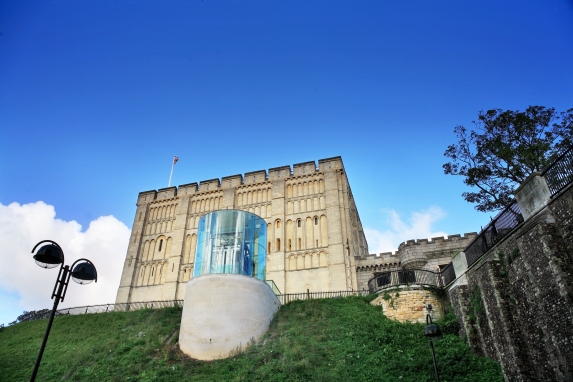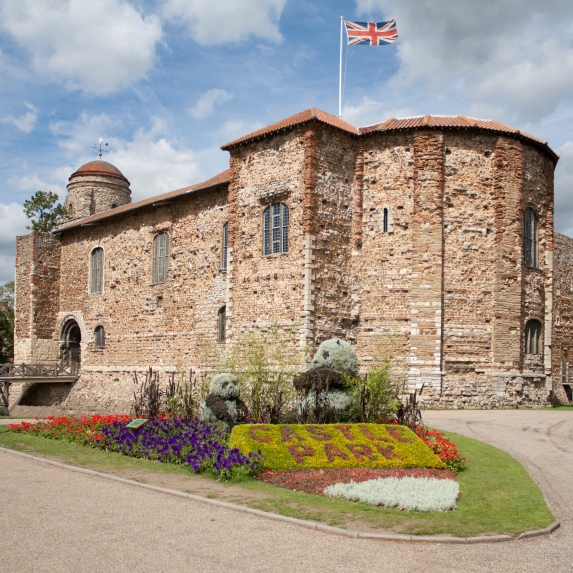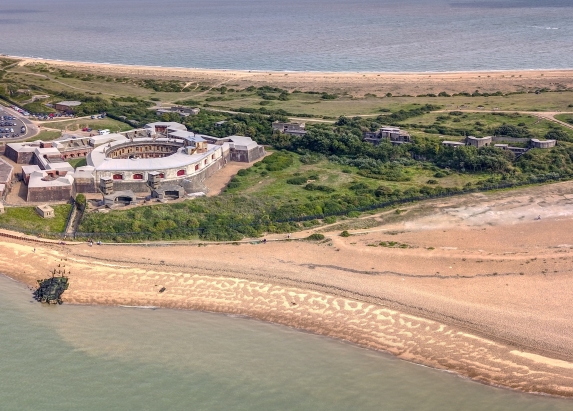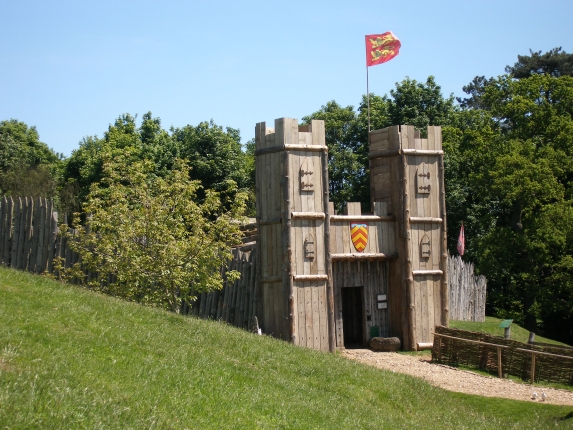Words by Helen Dorritt
There's nowhere better to experience the military, political and cultural history of East Anglia than the many castles and forts that stand majestically throughout its counties. And with school holidays upon us, why not take your mini knights to explore them?
Norwich Castle
Norwich Castle was the only castle built by William the Conqueror in East Anglia and, during its nearly 1,000-year history, it’s been a royal palace, a prison and, since 1894, a museum and art gallery, which it remains today.
Although not much of the original Norman structure remains, the castle’s keep – described as “the most highly ornamented in England” – is still there and was refaced in the late 1800s based on its original ornamentation. You can climb up the Norman staircase for wonderful views across the city, or head below to take a guided tour of the dungeon where the prisoners were once kept.
The museum and art gallery have an eclectic and extensive range of exhibits, including paintings, ceramics, archaeological finds, silverware and natural history. Entry is free, making it a great place for a summer holiday trip.
Nearest station: Norwich

Harwich Redoubt Fort
This circular fort was part of the Martello Towers chain of defences that were built in the early 1800s to protect the south coast of England from a Napoleonic attack. It cost a staggering £55,000, measured 200ft in diameter, was able to house 300 troops and 10 guns, and allegedly was built using labour from French prisoners of war.
Despite all this preparation, a gun was never fired in defence from the fort and by the 19th century its importance had waned. The fort reprised a military role as a detention centre for British troops in the Second World War – you can still see some soldiers’ graffiti on the walls – but was listed as an Ancient Monument in the late 1960s and restored as a museum, which is now run by volunteers from the Harwich Society.
Nearest station: Harwich Town
Colchester Castle
Similar to Norwich Castle, Colchester Castle is also now a museum, showcasing the rich history of the city. This Norman structure was built on the remains of Roman temple and is still largely complete.
There have been some dark times in the castle’s past – Witchfinder General Matthew Hopkins imprisoned and interrogated suspected witches here in the 1600s, while two Royalist leaders were executed in the castle grounds during the Civil War. Nowadays, however, you can enjoy interactive displays, climb to the roof, explore the Roman foundations, explore important archaeological finds, such as Celtic coins and Roman jewellery, and even bring the castle to life with augmented reality.
Nearest station: Colchester

Landguard Fort
Situated on the strategically important Landguard peninsula that defends the approach to Harwich harbour, the current Landguard Fort is the fourth fort to occupy the site. The current building has its origins in the 1740s, when a pentagon-shaped brick structure was built, which was then remodelled with London yellow bricks in the 1870s and underwent further building work in the 19th and 20th century.
Languard Fort was active in both world wars, being used as in an anti-aircraft capacity in the Second World War, and also played a role in Cold War defences. After its military role was over in 1956, the fort fell into neglect, but is now looked after by English Heritage and the Languard Fort Trust. This Grade I-listed building has a maze of rooms and passages to explore, and a climb on to the bastion will also afford glorious sea views.
Nearest station: Felixstowe

Mountfitchet Castle
This castle is unique in being the only Norman motte-and-bailey castle and village to be reconstructed on its original site. The original castle was built by Robert Gernon, Duke of Boulogne, in 1066. His descendant Richard de Mountfitchet joined a baronial rebellion against King John I in the early 1200s and, as a punishment, Mountfitchet Castle was destroyed.
Fast forward to 1975, when Alan Goldsmith had a dream to rebuild the castle and open it to the public, which he successfully did after a decade of building. The involvement of historians, archaeologists and craftsmen ensured the construction was as historically accurate as possible, so visitors today can explore the castle and village, accompanied by animals such as chickens and cows who freely roam the grounds.
Nearest station: Stansted Mountfitchet

Cambridge Castle
We’re sneaking this one in as, despite the fact the building itself is no longer there, the site of Cambridge Castle is well worth a visit to learn about its many layers of history. Originally the site of the Roman town of Duroliponte, which itself was built on an Iron Age fort, the castle was built after the Norman conquest but fell into disrepair in the 14th century.
If you walk around King’s, Emmanuel, Trinity and Magdalene colleges you’ll see some of its stones – they were recycled for university building works. The castle had a brief resurgence around the Civil War, when what was left of it was repaired and used as a Parliamentarian stronghold, but it was ordered to be slighted (damaged beyond use) by the 1647 parliament, and only the gatehouse was left standing.
This became the city jail but this last remaining part of the castle was demolished in the 1840s. Now only the motte and some other earthworks remain, but a climb to the top of the castle mound will give you fantastic views over the city – and on a clear day you may also be able to see Ely Cathedral.
Nearest station: Cambridge


